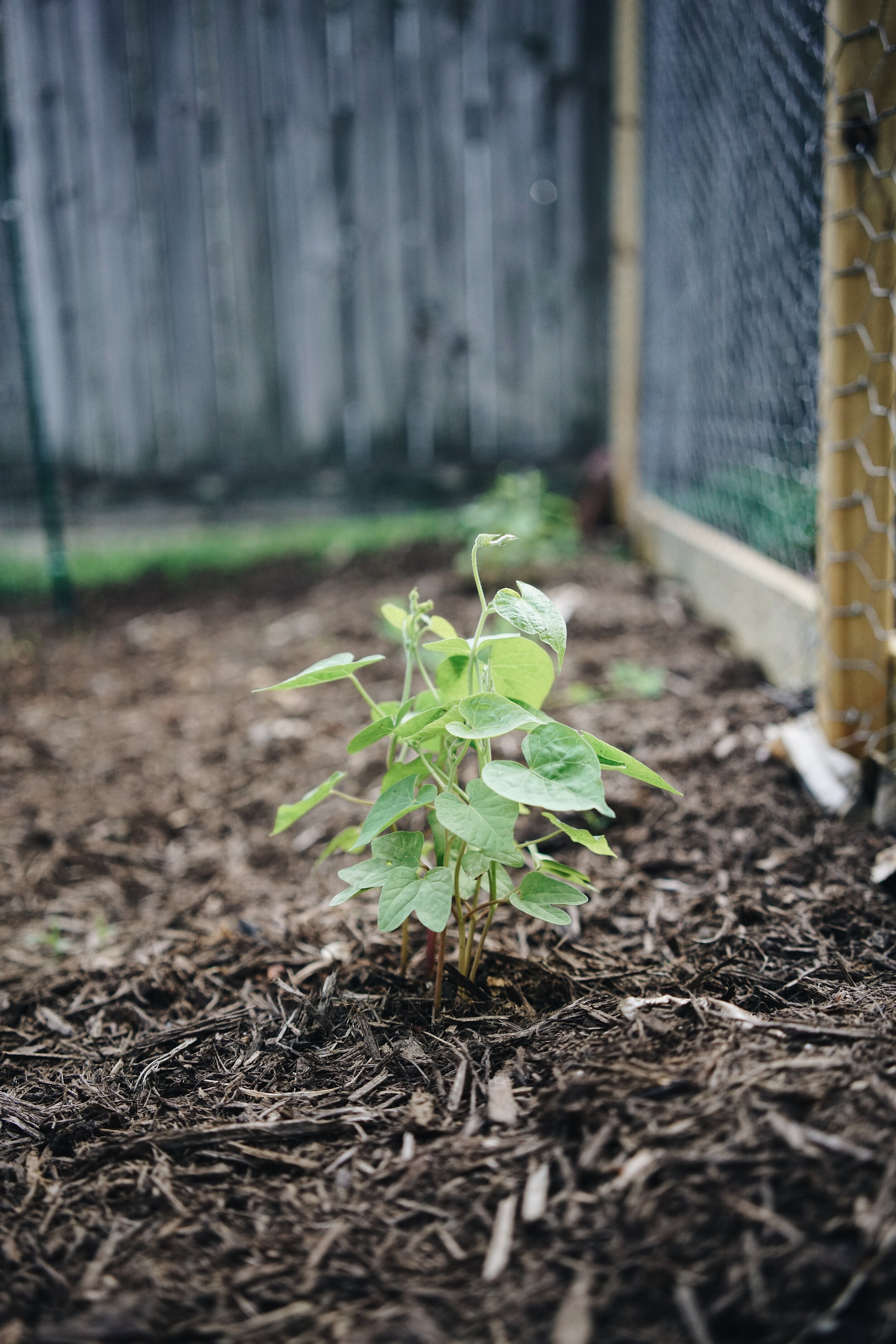Late Spring - Early Summer in Our East Tennessee Garden
/On August 1, 2020, I’ll be stepping away from Facebook as I have already done on Instagram [May 2020]. Facebook’s policies and leadership are not in-line with mine, so I will no longer be actively engaging on their platforms. Instead, I’m establishing my small corner of the universe here, on my blog, where I’ll share vignettes from life and anything else I might have posted to a “feed” elsewhere.
Our garden has been one of this season’s greatest sources of joy.
There’s no leaving the Coronavirus pandemic out of this post. It’s shaping every moment of our lives.
Though I already worked from home, I spend much more time within the bounds of this property as an immunocompromised “high-risk” person. I no longer go to restaurants, have reduced my shopping to the essentials, avoid crowded places, and only visit friends within my trusted quarantine community.
This means more time than ever to spend learning about and caring for our garden.
May 4 | This is the first of my #May30x30 capsule wardrobe photo series, originally posted to Instagram. Taking photos almost every day brought me out of a creative slump and help me to be more present with my environment. The garden was a source of inspiration and a prime location for many of these photos.
There were many gray, rainy days in May, and it felt like our garden might not make it.
After a frosty April, May was so grey and drizzly that I thought our plants might never take root. The sun would hide for days at a time and our plants seemed chilly, blue-hued and miniature. A lesson learned retroactively is to have plucked the baby greens early on to enjoy their sweetness and encourage the plant to grow more actively.
I can’t say that we were ultimately confident that this effort would amount to much. Watching day after day of minimal sun and testy temperatures, plus both of our minimal experience in growing a garden from seed, we cracked a lot of jokes about the garden meeting an early end.
May 23 | Collard greens just before they double in size
May 23 | Our sunflowers sprouted within 48 hours and would grow to be 5 - 10 feet tall.
May 23 | Morning glories planted for my love (they are his favorite) that have now far overgrown their plot. Needless to say, I’m regretting it!
During this month, we were also raising our new puppy Ducky.
You can learn more about Ducky in his featured post Two Months with Ducky* (blog post coming soon!). Right around the time that our garden was taking shape, I met the little Duck through an REI colleague who was fostering him with his supposed littermate, now named Lupita. Lupita would go on to be adopted by a close friend and REI team member, but we really weren’t “in the market” for a dog.
But, I knew that as Gallow got older (he’s 10!) he’d be less and less interested in hanging out with an insane ball of energy. I’d want my next dog to learn everything they could from Gallow who has been the greatest companion I could’ve ever hoped for. I knew I wanted to adopt a puppy, and the stars aligned for this one.
Ducky doesn’t go in the garden but he has a special line staked outside in the backyard so we can still hang out while I work.
Shortly after adopting Ducky in mid-May, the sun began to shine!
May 23 | Ducky is learning to ‘not’ be in the flower bed.
May 23 | Planting basil from a plant I bought at the grocery store.
June brought even more much-needed sunshine and surge of growth in the garden.
Our sunflowers seemed to double in size daily. I planted okra and corn in vacant spaces. We couldn’t keep up with the arugula, even though only half the seeds we planted actually flowered. And, the mystery squash and mystery melon began to grow like wildfire.
During this time, we harvest arugula and peas, though we actually didn’t know what to do with the peas. They were an “Early Alaska” variety and were a source of instant gratification in garden. Within weeks they were full of pea pods, giving us hope that we might still make it!
I also thinned our tomato plants back because, unsurprisingly, a lot of seeds sprouted. Tomatoes grow pretty well in our experience and it was a bummer to have to thin so many gorgeous plants.
I packed them into ziploc bags with their species written on the front and brought them to REI and to a few friends where almost all found loving homes!
Click on any of these images to see them full-size!
June 11 | Sunflowers are climbing higher and higher daily, and as I did throughout the garden, they’re very crowded.
June 11 | Bush beans were one of a few seeds I threw into the back yard last year (see the white fence in the back right) and they grew well.
June 11 | Mystery squash and mystery melon from Beardsley Farm, from their “Free” bin long after their plant sale and well-into quarantine.
June 11 | Morning glories before I really knew what I was in for… they are beautiful though. Lesson learned: Plant fewer and train them early.
June 11 | Four different kinds of tomato plants, thinned from the two standing DIY “Trellises” headed to REI for new homes!
June 11 | Big arugula harvest that went to sautéed sides, salads, and to a few close friends.
There’s nothing quite like the first salad (or in my case, butter-wilted greens) from a garden harvest!
Before this garden, I had neither experience nor taste for collard greens. I didn’t grow up eating them (my parents were yanks from the north) and whenever I saw them at a restaurant, they seemed like unattractive slop.
With our collards exploding to the point of pointlessness, I trimmed a bunch back and went hunting for a good recipe. I figure: with enough bacon spices, how bad could they be?
My favorite: Kick’ Collard Greens on Allrecipes
This has become a staple summer recipe in our meal plan. I make a big batch on Sundays and it carries us through a week’s worth of lunches, paired with mashed potatoes, roasted roots, and cast iron-seared protein.
Gardening turned me into a passionate cook.
Learning to cook what’s in my garden and working to elevate what I pair with our harvests has given me a ton of practice in the kitchen. Mix-in the lack of restaurant visits because of quarantine and we’ve cooked almost every meal at home for four months.
Next in the kitchen came Korean beef lettuce wraps (with our Romaine), lox with (dairy-free) cream cheese and dill, and homemade pesto. We’re looking forward to tomato season so we can make and preserve:
Ketchup
Creamy tomato soup (dairy-free)
Pasta sauce
Pizza sauce
San Marzano tomatoes
Sundried tomatoes
Pico de gallo
Fried green tomatoes
Rotel
June 21 | This big space is finally starting to look like a garden!
June 21| We Our ‘Sun Ray’ tomatoes from Beardlsey Farm are growing tall and sturdy up against the house.
June 21 | More collards, Romaine, and Bowl Lettuce than we can eat, so we bring plenty to our friends & co-workers at the Knoxville REI.
June 28 | Sunflowers are now taller than Bryan + Me, though a few thinner flowers pepper the 4-ft fenceline.
By end-of-June, summer is in full swing [HOT] and plants are doubling in size almost daily.
It takes about 30 - 40 minutes to water the full garden and about 1 - 2 hours per week to prune and trellis plants as they grow. A few tips I’ve learned along the way (I’ve included YouTube videos for reference):
Pruning squash
Watch the squash carefully, especially in the beginning, to train it to grow where it will fit.
Trim the bottom leaves on the stalk to encourage it to grow up.
Though a lot of our young fruit fell off in the beginning, I found that cutting back “offshoot” vines helped the primary vine focus on the squash it was already growing.
Make sure your trellis material is strong enough for the size of your fruit (big face palm here).
Hands-on with tomatoes
Prune suckers to keep your plant growing strong and tall with its center stalk.
Trim off lower leaves to help the plant use the energy for growing fruit.
Trim dead or disease (or brown, yellow, or spotty) leaves, but make sure to leave the leaves that are protecting fruit from sunburn.
Help tomatoes grow tall and strong by staking them to something sturdy.
Creating ‘bushy’ basil plants
Prune basil early and as often as required to help the plant grow in more of a “bush” shape than a tall tree.
Water basil often, especially as it gets hot. We may experiment with a mini shade structure to see if it’ll prolong basil’s growing season.
Excess basil can be hung upside down to dry for your own basil seasoning. Or, it can be wrapped in a wet paper towel and given to friends!
In short order, I became very comfortable with hacking off intrusive vines, tomato suckers, and lower leaves on plants that thrived evermore without them.
June 30 | Bryan next to the sunflowers, for scale.
June 30 | Amelia with a collards, romaine, and bowl lettuce harvest.
June 30 | Sun ray tomatoes from Beardsley already turning ‘mature green.’
June 30 | Our first bell peppers from the Beardsley Farm transplants!
June 30 | Cherry tomatoes (my favorite) with a very bumpy stem.
June 30 | Roma tomatoes - these have the most luscious and beautiful leaves of all our tomato kinds.
June 30 | One of many early fruits on the myster squash that didn’t survive.
June 30 | Mid-month I thought to plant okra in this extra space left in the garden and they grew quite large, despite competition with the squash.
June 30 | our ‘from seed’ Tomato plants, which were absolutely puny when we transplanted in May, are growing strong!
Until the end of the growing year (I think) I’ll be publishing monthly garden updates in lieu of sporadic photos shared on social media.
First and foremost, this is my own scrapbook. I look back on my blog and see important snapshots of my world that I felt proud and excited to share. And of course, I love to share my journey with you (dear reader), whoever you may be.
Keep an eye out for July’s garden update the first week of August, and a few more posts in the works upcoming.


